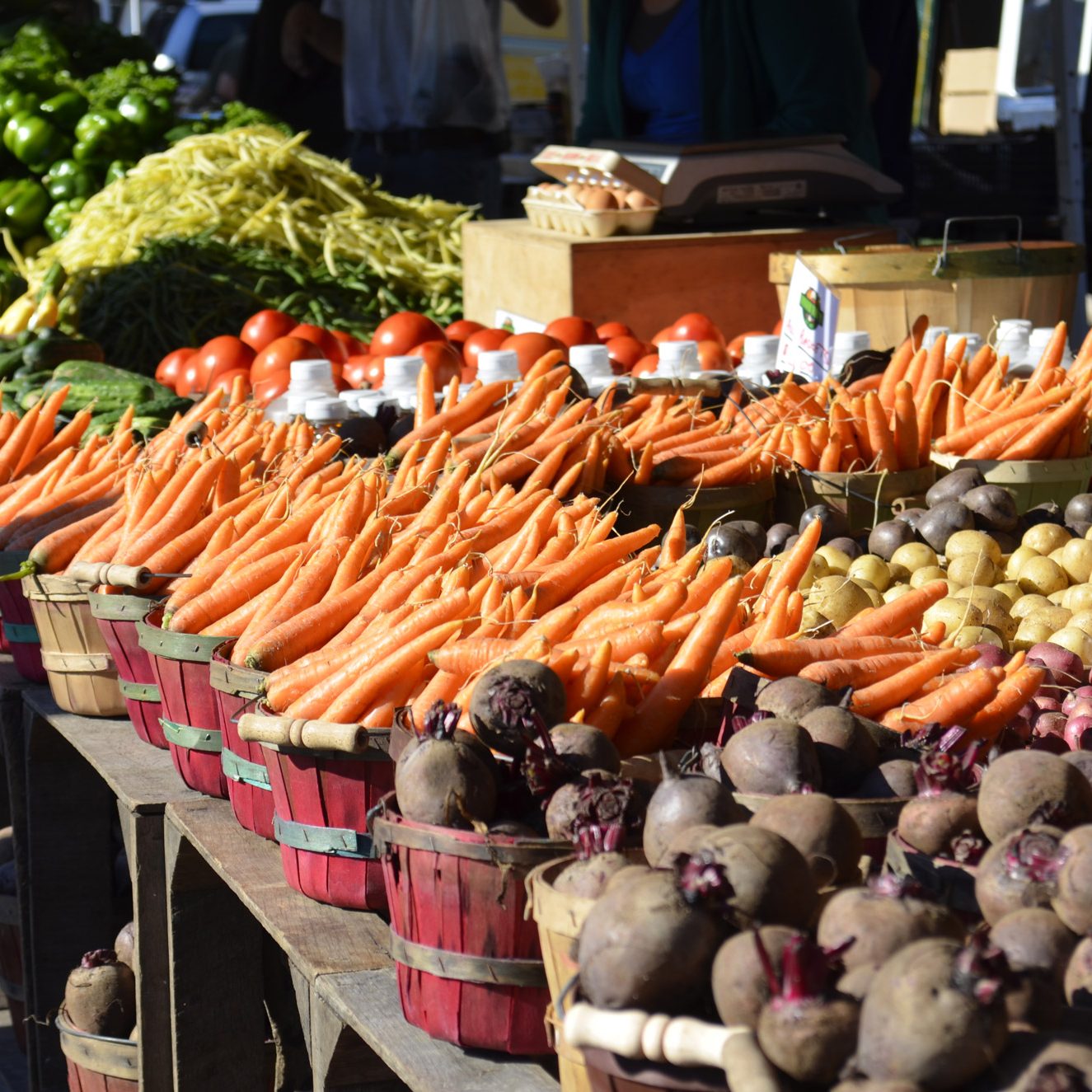Food Environment
- Broadly emphasizes the affordability, accessibility, and Diversity of food options within a community.
- Can be shaped by the physical, social, economic, cultural, and political factors within a community or region.80
- Can influence Diet quality, food skills, and Social wellbeing, as well as stress-related and diet-related illnesses.
- Clean and safe water supply is critically important to individual and community health.


The Food Environment goes beyond the food we consume to include how food options (e.g., retailers, gardens, restaurants) are located and dispersed across our neighbourhoods. The accessibility, affordability, and the Diversity of food options all play important roles in shaping a neighbourhood’s Food Environment and people’s opportunities for healthy eating.
Example Criteria for Food Environment Design
 Is there access to clean and safe water supply?
Is there access to clean and safe water supply?
Safe and clean water supply is a basic need that should be accessible to everyone.13
 How is the retail Food Environment spread out?
How is the retail Food Environment spread out?
Retail food environments include all the different food choices that are available for consumers.1,13 Keep in mind that retail food environments are not just about a neighbourhood’s access to food, but the quality and cost of foods as well. For example, a neighbourhood may have lots of access to food outlets, but those outlets may consist mostly of unhealthy or costly foods, with limited or no access to other food outlet options.
 Are there Community kitchens or programs available?
Are there Community kitchens or programs available?
Community kitchens or programs offer the benefit of reducing Food insecurity and improving social and nutritional health in communities.81,82
 Are there edible landscaping or community gardens available?
Are there edible landscaping or community gardens available?
Community gardens bring together sustainable land use, community planning, the Food Environment, and wellbeing.83 They provide access to fresh and organic foods while empowering residents to participate in an active community activity.84 Edible landscaping refers to planting different vegetables, herbs, and pollinator-friendly flowers in private or public spaces rather than planting decorative flower species.85
 Environmental Considerations
Environmental Considerations
A Food Environment including community gardens and an appropriate food waste disposal system encourages recycling, composting, and reduction of solid waste disposal and reduces water pollution due to runoffs or leaching. Appropriate food waste disposal systems protect water and air quality which contributes to community health and Food security.86
 Economic recovery Considerations
Economic recovery Considerations
Community kitchens and larger community gardens provide an opportunity for Social enterprise (e.g., new innovative food business ideas) and supporting local food needs. Studies in Canada and elsewhere have found that community gardens can also have a positive impact on property values in surrounding neighbourhoods.87,88
Community kitchens, community gardens, and community food programs can help to promote Food security for residents. Food security is “the condition in which all people, at all times, have physical and economic access to sufficient, safe and nutritious food to meet their dietary needs and food preferences for an active and healthy life.”149 However, research in this area shows that tackling Food insecurity requires income-based policy interventions to reduce financial strain for Canadians with insecure or inadequate access to food.154
 Pandemic Recovery Considerations
Pandemic Recovery Considerations
One of the many consequences of COVID-19 has been increased levels of poverty and limited access to food. As we move towards COVID-19 recovery, there is an opportunity to ensure Food security and create Social safety nets to improve the Food Environment and reduce Social inequalities.89

Did you know?
Only about half of Canadians live in a neighbourhood within a 1 km walking distance from a grocery store. In smaller metropolitan areas this number drops to 30% and is even lower among Canadians who live in rural areas, at 16%.92
Key Food Environment Considerations for:
Consider the benefits of building a private edible landscape or participating in a community garden. For example, take a look at the Community Gardens Handbook created by Alberta Health Services.93 Growing your own food can result in food bill savings and increase your consumption of produce, while also reducing your personal Carbon footprint.
Consider the benefits of community gardens on surrounding property values.
Consider the importance of healthy food environments and Equitable accessibility to healthy foods when planning and designing communities.80
Consider the importance of gaining input and advice from multiple different stakeholders on land-use and land-development decisions. Decisions that are related to food environments, such as rural and urban agriculture, can greatly impact communities. Alberta’s Land-Use Framework94 provides a blueprint for sustainable and smart growth, including considerations around agriculture, healthy ecosystems, and clean water and air.
Consider providing government-funded edible landscape planting in public spaces that are open to everyone. These programs and initiatives can be done in partnership with other community groups and organizations, and can promote productivity and revitalization of vacant lands.87 For example, the City of Red Deer provides concentrated edible landscape plantings in the form of community food forests and orchards.95 Communities can play an important role in local food environments, and municipal support can help community groups to reach residents. An example of community-based initiative targeting Food security and healthy food environments includes Lady Flower Gardens, a non-for-profit community garden that empowers all residents, particularly marginalized populations, to engage in experiential learning through gardening and feeding their families. Another example is Fresh Routes, a mobile grocery store that aims to provide affordable, nutritious foods to residents in Food deserts in the Calgary area.



